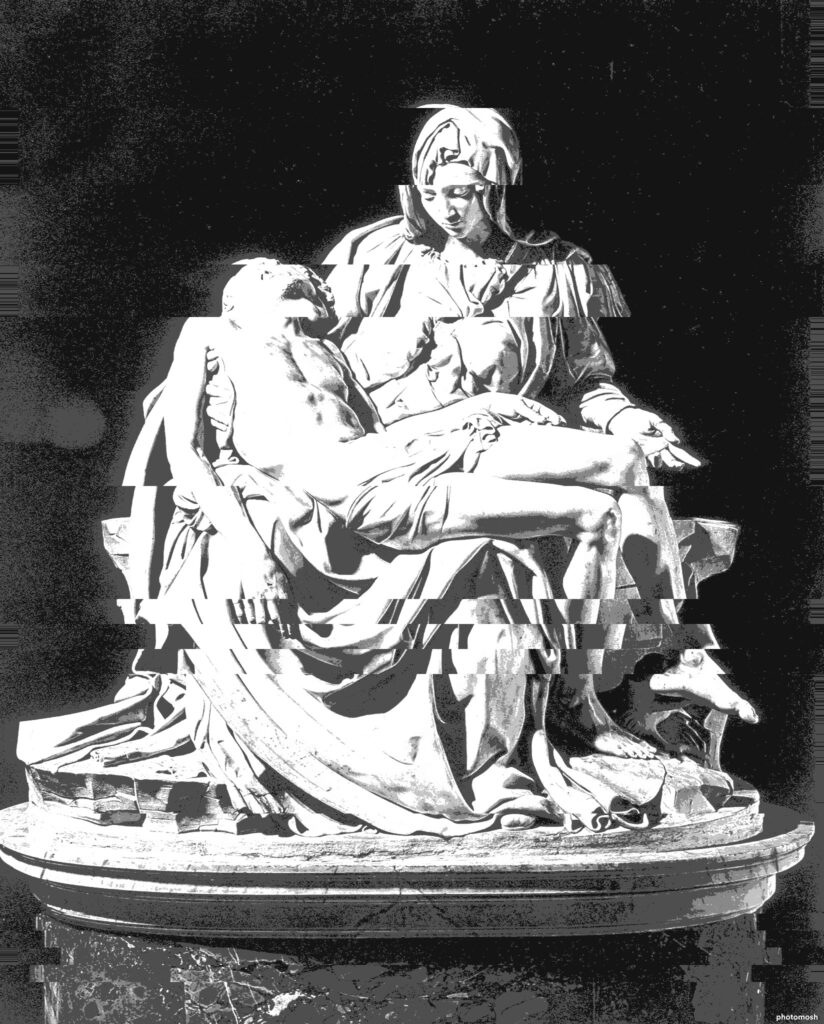Today’s readings are the same as yesterdays which is a weird quirk in the lectionary so I’m reposting my commentary with some additions.
39 In those days Mary arose and went with haste into the hill country, to a city of Judah,
“In those days” anchoring this sections timeline to somewhat immediately follow the previous. This would be in the same days of the Annunciation. Mary after speaking to Gabriel goes with “haste into the kill country, to a city of Judah”.
Mary’s haste to visit Elizabeth parallels the Ark of the Covenant’s journey to the house of Obed-edom in 2 Samuel 6:9-15.
40 and she entered the house of Zechariah and greeted Elizabeth.
Mary enters the home belong to Zechariah, the husband of Elizabeth and Elizabeth greets her cousin, Mary. The Ark of the Covenant, carrying God’s presence, was greeted with joy when it entered the house of Obed-edom. Similarly, Mary, carrying Jesus, enters Elizabeth’s house, bringing joy.
41 And when Elizabeth heard the greeting of Mary, the babe leaped in her womb; and Elizabeth was filled with the Holy Spirit
Upon hearing Mary’s greeting Elizabeth is filled with the Holy Spirit and the baby John the Baptist within her womb leaps for joy. The Ark is greeted with joy, and the Spirit fills those who come into its presence. Elizabeth, filled with the Holy Spirit, reacts with joy when Mary, carrying Jesus, enters her house. 2 Samuel 6:9-15 – “And David danced before the Lord with all his might… and the Ark of the Lord came into the city of David with gladness.”
42 and she exclaimed with a loud cry, “Blessed are you among women, and blessed is the fruit of your womb!
Elizabeth’s exclamation is not simply a verbal greeting but a prophetic declaration. Her loud cry reveals the depth of her joy and awe in the presence of the Messiah, foreshadowing the universal praise that Jesus will receive.
The word in Greek for exclaim anephōnēsen is only used once in the entirety of the New Testament, this proves its prophetic pedigree. It’s usage in the Old Testament is limited to the peoples shouting when they see the Ark and how the Levites praise God before the Ark in 1 Chronicles.
Elizabeth is described as a descendant of Aaron so her biological lineage is to the highest of the Old Testament priesthood, the word used by Luke to describe her phrase “blessed are you among women” is the highest prophetic term for priestly declarations. This leads us to the phrase itself. “Blessed are you among women” it is obviously a pretty high commendation of Mary on the face of it and it may sound like an odd way to say something but that’s because despite Luke writing in Greek, he is retaining the idiomatic Hebraic phrasing. When people change this wording to be “more accessible” they remove that element and also its connection to the Old Testament.
Although unique to the New Testament, this phrase is not unique to the Old. There were two women who were described as this and there is a very interesting link. The first, Jael in the Book of Judges, she is called the blessed among women because she drives a tent peg through the head of the enemy of the Israelite people. The second is Judith, from the Book of Judith, she is called blessed among women for severing the head of the enemy of the Israelite people in her day. So how does this connect to Mary?
“For our struggle is not against flesh and blood, but against the rulers, against the authorities, against the powers of this dark world and against the spiritual forces of evil in the heavenly realms.” Says Paul in Ephesians 6:12.
The Protoevangelium, all the way back in Genesis 3:15 says
“I will put enmity between you and the woman, and between your seed and her seed: she will crush your head, and you will lie in wait for her heel.”
The serpent is not just a snake, its the evil one who we commonly call Satan, a fallen angel, the leader of the spiritual forces of evil Paul refers to. Mary is blessed among women because she will crush the head of the true enemy by giving birth to Jesus.
43 And why is this granted me, that the mother of my Lord should come to me?
Elizabeth’s response mirrors David’s awe when the Ark is brought into the city. Both recognize the holiness of the presence they are encountering.
2 Samuel 6:9 – “And David was afraid of the Lord that day, and he said, ‘How can the ark of the Lord come to me?’”
44 For behold, when the voice of your greeting came to my ears, the babe in my womb leaped for joy.
“Babe in my womb leaped for joy”: John the Baptist’s leap indicates that even in utero, he recognizes the presence of Jesus. This moment reflects the joy that the coming of the Messiah brings to all of creation, even in the unborn.
This moment is often interpreted as a sign of the sanctity of human life and the joy that the presence of Christ brings into the world, even before birth. It also foreshadows the role of John the Baptist in heralding the coming of the Savior.
45 And blessed is she who believed that there would be a fulfillment of what was spoken to her from the Lord.”
Elizabeth’s praise of Mary focuses on her faith in God’s word. Mary’s belief in the angel’s message and her willingness to accept God’s will without reservation is central to her blessedness.
This verse highlights Mary’s faith, which is a key element of her assent to God’s will, often depicted as her “fiat” (let it be). Her faith is an example for all believers, and she is considered the model of perfect discipleship in Catholic teaching.


Leave a Reply